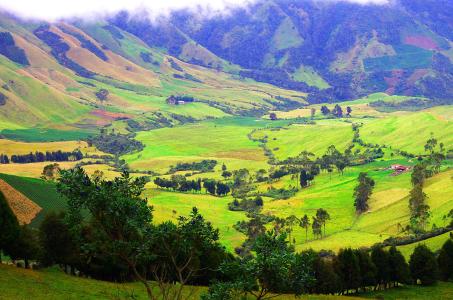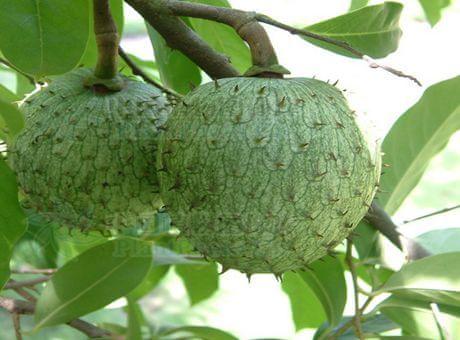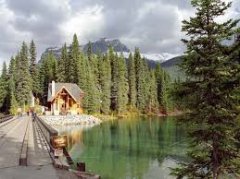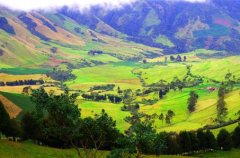Colombian coffee with beautiful cuisine also made a trip to find coffee in Colombia.
The central part of Colombia is dominated by the Andes Mountains, which is a great place to collect scenery. It is also one of the most important coffee producing areas in Colombia. Whether it is hiking in the mountains or savoring freshly roasted coffee in the coffee plantation, it is a Colombia experience not to be missed.
Colombia people call black coffee Tinto, and there are mobile coffee stalls on the streets that inject "caffeine" into you all the time. Pre-brewed coffee is usually served in a thermos bottle and sold in a small plastic cup. It is very casual and can be called the national drink of Colombia. Those expecting to taste Tinto are often disappointed that the thin taste doesn't seem to match Colombia's reputation as producing the best coffee in the world. It is said that the best coffee beans in Colombia are exported to Europe and America. In addition, local people brew coffee by simple drip filtration method. To drink coffee with better taste, they have to go to regular cafes or restaurants.
Go to Zona Cafetera in central Colombia, which is also a good name for coffee. This valley at the foot of the Andes, with an average altitude of about 2000 meters, is one of the most important coffee growing areas in Colombia, with Salento being the most popular among travelers. The hill town was pretty, its checkerboard streets full of old earthenware houses, churches and squares blending in with the surrounding green hills. Most of the town's population is engaged in coffee farming, and because of the high altitude, heavy humidity, and fertile soil, this area is an excellent place to grow Arabica coffee.

The lifeblood of Colombia's economy has always been tied to coffee. Coffee beans are believed to have been brought to Colombia by missionaries in the 16th century. By 1835, Colombia had begun exporting coffee to the United States. Colombia currently ranks third in the world in coffee production, behind Brazil and Vietnam. According to the International Coffee Organization, Colombia produced 8,523,000 bags in 2010 (Vietnam produced 19,467,000 bags, each bag was 60 kg). Colombia's coffee export value in 2010 reached US $2.2 billion (about HK $17.2 billion). Many coffee plantations are traditional small-scale homework. As the climate becomes unpredictable and coffee prices fall, the income of small farmers is affected. Many coffee farms have also begun to transform and open to tourists, while operating residential accommodation.
The hills surrounding Salento are dotted with coffee estates that visitors can visit for a small fee. Most of the staff guides speak only Spanish, but through "visual inspection"(the guide's hand and foot), they can roughly understand the coffee growing and production process. Because of climate, soil and geography, Colombia produces better-tasting, higher-priced Arabica coffee, which can be harvested twice a year. Asked why Colombia coffee beans are so famous, the tour guide said that local coffee is hand-picked and carefully selected to ensure that the coffee beans are of high quality. Coffee beans are also washed and soaked in water to further separate the quality of coffee beans, bad and immature coffee beans will float on the surface.
After the tour, the staff immediately brewed a pot of coffee for us. Sitting in a position with a view, surrounded by green mountains and green waters, slowly savoring the low-acid, smooth-tasting Colombia coffee, a coffee-filled afternoon is spent like this. The general manor also provides accommodation and even welcomes visitors to join their work. Those who have time and don't mind spending money and suffering may consider doing short-term volunteer work here.
If coffee isn't your cup of tea, Salento is also a great place to hike nature. Valle de Cocora, half an hour's drive from Salento, is a valley full of Wax Palm trees, and a five-hour hike gives you a natural view of Colombia without too many tourists. Walking in the thick fog forest, occasionally meet the local mountain people riding horses, they will always take the initiative to tell you Good day. Deep in the mountain forest, there is a homestay for hikers to rest, planted with all kinds of colorful flowers, and attracted a colorful hummingbird.
Walking out of the mountains along the misty valley, rows of palm wax trees guard the valley like sentries. This national tree of Colombia can grow to 60 meters and is also the tallest palm wax tree in the world. The long, slender trunk pointed to the sky, and it was quite graceful. The surging fog made the forest looming, adding to the mystery. As soon as the sun rises, the mist lifts, revealing a breath-taking landscape, which is soon confiscated by the clouds, and which, after a few minutes 'patience, suddenly comes to us again, changeable and surreal, and it is no wonder that what Latin American literature calls magic was born in this land.
Travel to Colombia and taste the most memorable local fruits. The market can always see a variety of colorful, unheard of fruits, including tree tomatoes, red hair durian, etc., these fruits are generally made into juice, it is able to quench the heat. Don't miss the ubiquitous Lulo, a persimon-like fruit found only in Colombia. The skin of Lulo is tough and full of fine thorns. It is especially delicious when mixed with fresh milk.

Important Notice :
前街咖啡 FrontStreet Coffee has moved to new addredd:
FrontStreet Coffee Address: 315,Donghua East Road,GuangZhou
Tel:020 38364473
- Prev

A detailed discussion on the characteristics, flavor and taste export of Colombian boutique coffee manor coffee
Colombian coffee is one of the few individual coffees sold in the world under its own name. In terms of quality, no other coffee has been so highly rated by coffee drinkers. It also has a very nice name, called Emerald Coffee. Colombians' relentless pursuit of coffee quality can only be described in one word: seriousness. In addition to serious, but also serious. In this respect, it is widely known.
- Next

Colombian coffee flavor charming soft coffee "green gold"
Flavor characteristics: sweet in acid, low bitterness, rich nutrition, unique sour and mellow Colombian coffee is one of the few coffee named after the country in the world, and it is also one of the most famous coffee in the world. Colombia is located in the northwest of South America, and coffee is another pride of the people of this country besides football. The streets and alleys here are full of cafes, serving students.
Related
- Does Rose Summer choose Blue, Green or Red? Detailed explanation of Rose Summer Coffee plots and Classification in Panamanian Jade Manor
- What is the difference between the origin, producing area, processing plant, cooperative and manor of coffee beans?
- How fine does the espresso powder fit? how to grind the espresso?
- Sca coffee roasting degree color card coffee roasting degree 8 roasting color values what do you mean?
- The practice of lattes: how to make lattes at home
- Introduction to Indonesian Fine Coffee beans-- Java Coffee producing area of Indonesian Arabica Coffee
- How much will the flavor of light and medium roasted rose summer be expressed? What baking level is rose summer suitable for?
- Introduction to the characteristics of washing, sun-drying or wet-planing coffee commonly used in Mantenin, Indonesia
- Price characteristics of Arabica Coffee Bean Starbucks introduction to Manning Coffee Bean Taste producing area Variety Manor
- What is the authentic Yega flavor? What are the flavor characteristics of the really excellent Yejasuffi coffee beans?

